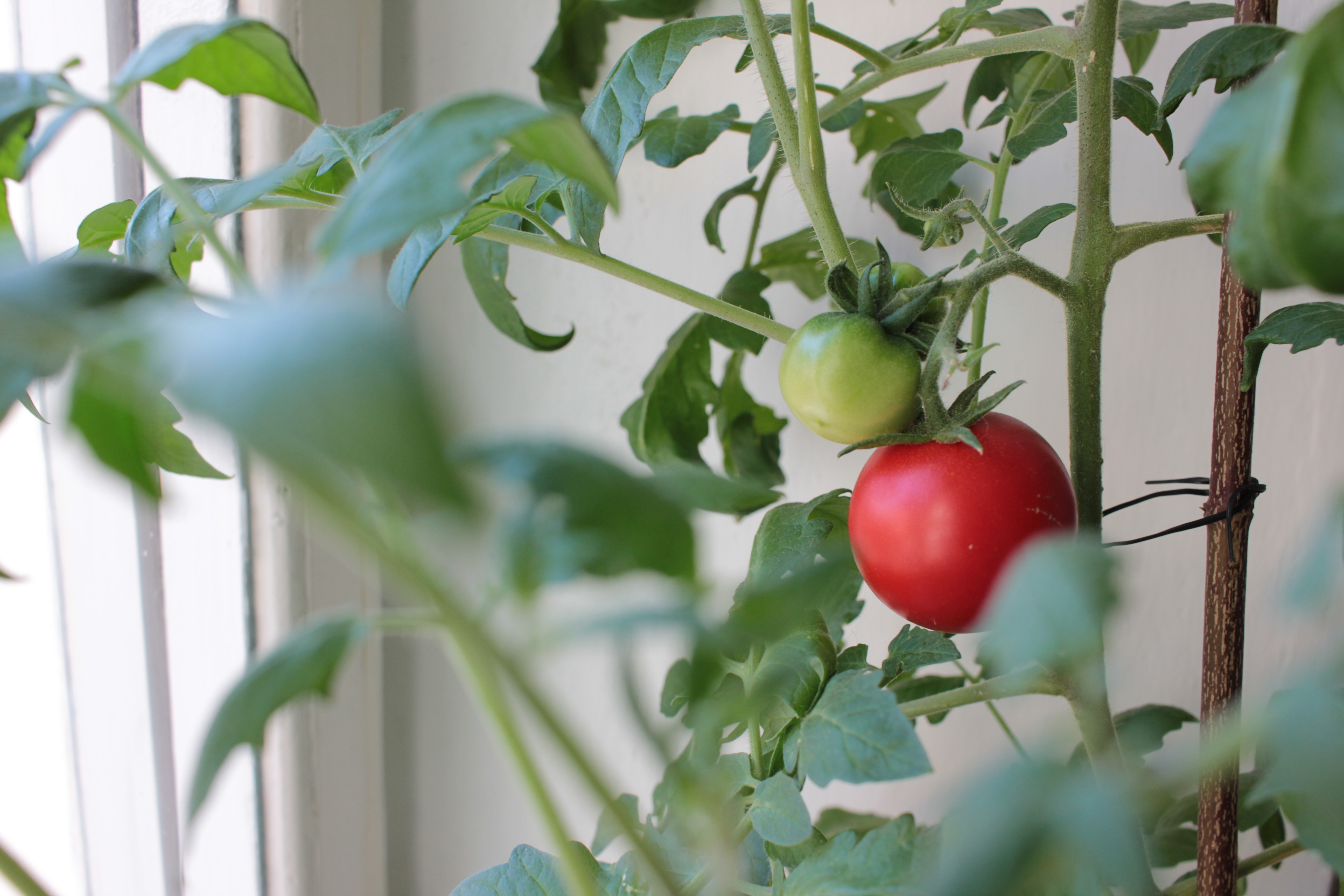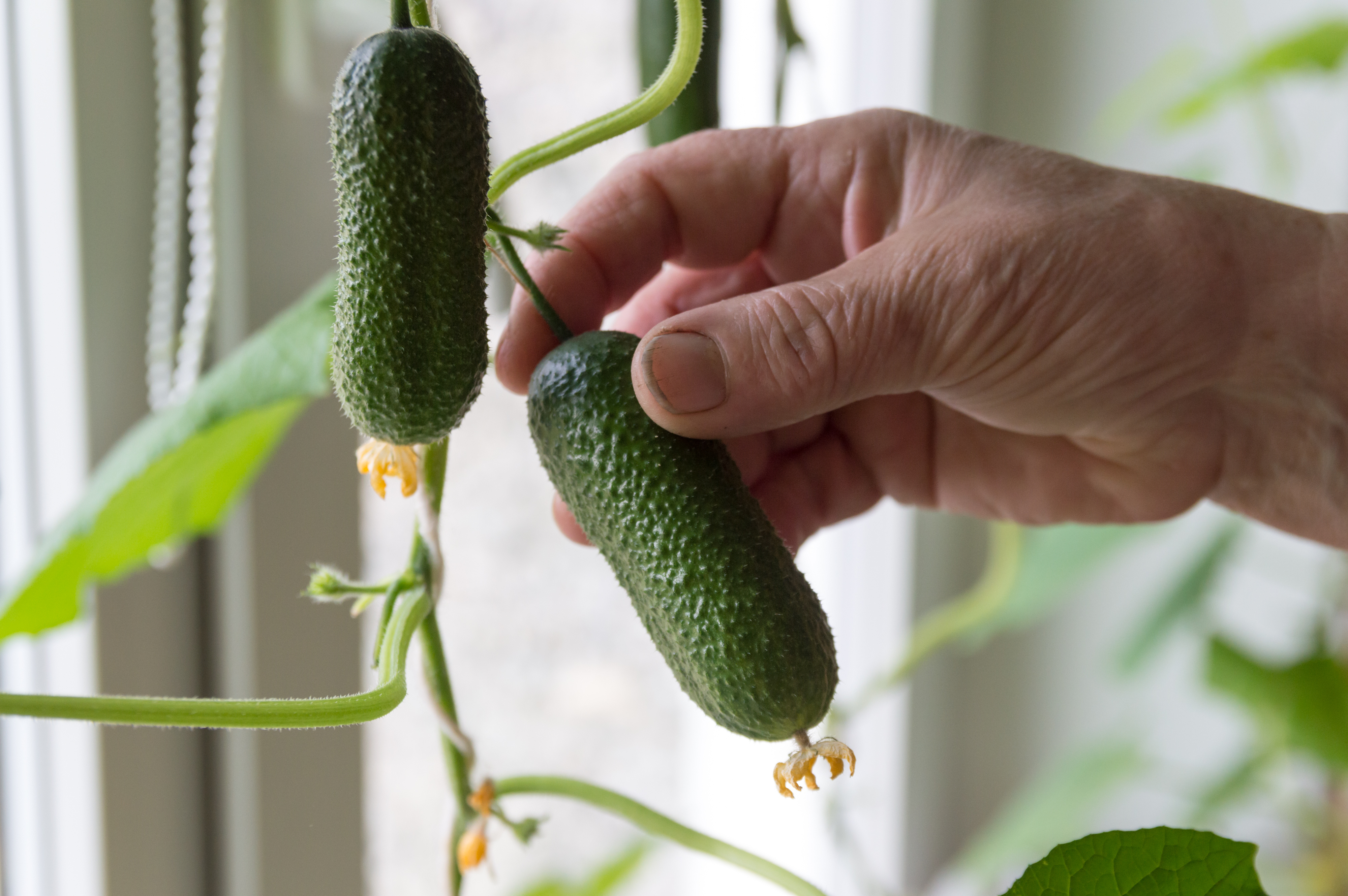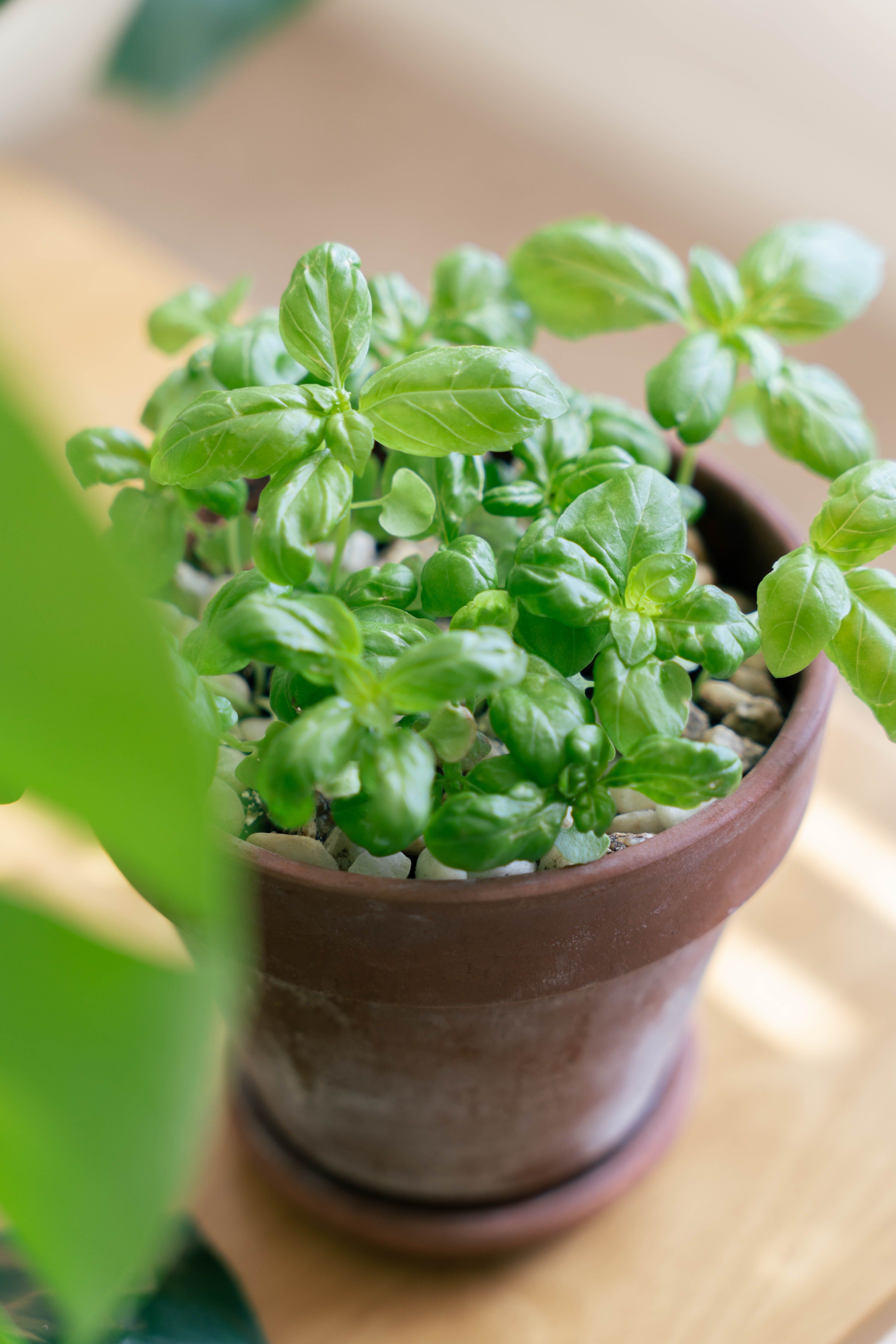Grow fruit and veggies indoors
It's certainly not everyone who has access to an outdoor space such as a garden, balcony or an allotment. But you can still grow a couple of different veggies and herbs, as long as you have some space and a good source of light. Here's a guide with suitable crops and what to think about to get a harvest.

What is required to successfully grow edible plants indoors?
There are a couple of edible plants you could grow indoors but they will generally not perform as well as when they're outside or in a greenhouse. Growing vegetables indoors is however still fun, but don't expect any enormous harvests - instead look forward to and enjoy the occasions when you can harvest something from your plants.
Apart from choosing suitable types of plants (which we will go into further down), it's also important to make sure the growing conditions are as good as possible in order to grow healthy plants and get a harvest.
Light
First of all your plants need to a have a good source of light. Plenty of natural light via a window during the summer or proper, high intensity grow lights is required. Producing fruits and veggies requires a lot of energy from the plants and light is their main source of energy. So you can't skip this part. Unlike many of our common houseplants which are naturally adapted to more shaded understory environments, most veggies and fruits are adapted to growing and thriving in much sunnier locations. Grow lights is an especially good addition for plants you need to start early in the season, like peppers and chillies for example.
Space
T omatoes, cucumbers and other fruits and veggies takes up some space so make sure you have room for them to grow. They will need to grow in your window or you're gonna have to supplement the plants with grow lights. Just remember that the intensity of artificial light needs to be very high in order to equal natural sunlight - if it's too weak, fruiting vegetables like tomatoes and peppers won't give you a harvest.
Healthy plants
Buy seeds or plants that are healthy and fertile. Avoid plants that looks wilted or unwell and make sure you inspect them properly for pests and disease before you decide to bring them home.
Nutrients
As mentioned before your plant is going to require a good amount of light, and that also applies to nutrients. A good sized pot and repotting regularly during the initial growth from the seedling stage, good quality soil and a frequent supply of fertilizer is required.
Regular check ups
Most crops are highly susceptible to pests. We recommend that you check on your plants regularly to catch any pest infestation in the early stages. Spider mites, thrips, white flies and aphids are the most common ones on veggies and herbs. Some of these can also end up on your plants later in the season through open windows for example - they naturally occur outdoors and can fly in. It's therefore also a good idea to use sticky glue traps preventative. This will both help catch potential pests early and it also makes it easier to detect pests on your plants if you check the traps regularly.

Best plants for indoor growing
As mentioned before not all vegetables, herbs and fruits are best suited for indoor cultivation. To get good results we recommend choosing suitable ones, like these:
Tomatoes
A suitable crop that you can grow indoors is the tomato. You will have to provide a sunny window as tomatoes need a lot of light to grow and bear fruit. Preferably acclimating the plants or seedlings early to a location with direct sunlight exposure most of the day, or at least about 6 h daily. Tomatoes will grow best in a container with good drainage, and they might need to be staked to support the weight of the plant and fruit. They use quite a lot of water as they grow and it's therefore good to move it to a slightly bigger pot a couple of times from the seedling stage to mature plant. With every repotting you can remove any older (perhaps wilting) leaves and plant it deeper in the next pot - they're really good at rooting along the main stem.
Make sure you choose a smaller sized variety so you don't end up with a too big plant, and only grow one plant per pot. Smaller varieties include 'Tiny Tim' and ' Red Robin' for example. Taller varieties can work too if you have large windows. It's however generally best to avoid large fruited varieties like beefsteak tomatoes and normal sized tomatoes if you can. Cocktail, cherry and currant tomatoes are best suited indoors. Shaking the plants gently now and then when they're in bloom can increase the chances of successful self-pollination and formation of tomatoes on the plant. In general they tend to self-pollinate okay on their own though, but this can be done if you notice the plant dropping many flowers without tomatoes forming.
Cucumbers
Cucumbers are also one of the best vegetables to grow indoors. They tolerate the stable high temperature and will grow quickly from the seedling stage to a large, blooming plant. Just like the tomatoes they do best when they're acclimated to direct sunlight, at least about half of the day. Most varieties will grow okay indoors but we recommend selecting smaller-fruiting ones since the plant will better be able to grow the cucumbers, and you will also get a higher chance of getting more cucumbers throughout the season. They're vining plants and will need some kind of support to grow on. It's also worth mentioning that cucumber plants make separate male and female flowers. Many varieties don't necessarily need to be pollinated in order to make a cucumber, but for optimal harvest it's still good to pollinate them. Since you grow the plant indoors there are no bees to help you out. Using a small brush or q-tip to move pollen from a male flower to a female flower is therefore a good idea. You can distinguish female flowers from male flowers by the small, not yet developed cucumber it's attached to.
Peppers & Chillies
These are well suited to be grown indoors in a sunny location. They need about as much direct sun as tomato plants, but do better in an even longer exposure daily. They're slow to start from seeds and need to be sown early in late winter or early spring. A bonus is that they're perennial and you could save a pepper plant and grow it for multiple seasons indoors given some supplemental light in winter.
It's common for the first couple of flowers to not mature into peppers on the plant. To increase the chances of them successfully making fruits it's a good idea to hand-pollinate the blooms.
There are a large number of varieties and species to choose between. Both smaller-sized ones and larger ones. Just like with the tomatoes and cucumbers, it's generally best to choose smaller-fruiting varieties since they will have better chances of maturing properly on the plant.
Leafy greens and herbs
Leafy vegetables and herbs require less light than fruiting ones. Direct sunlight exposure half, or at least part of the day is good but they will still grow stronger and better if they also receive direct sunlight most of they day. Herbs will also taste stronger in a sunnier spot and be more bland in lower-light conditions. Most are fast-growing and can be sown in intervals throughout the season to give a steady supply to harvest from. These include cutting lettuce, spinach, cilantro, mizuna and many more.
Some herbs, like different basils for example, are perennial and will eventually grow into shrubs as they get older. Just like peppers you can grow them for multiple seasons and supplement them with grow lights in fall and winter. They're also easy to propagate as cuttings.

Some suitable crops to grow indoors
Not all types of fruits and vegetables can be grown indoors. Their demands can be just too difficult to meet such as the time from seed to harvest, temperature shifts throughout the day or year, and other environmental factors. Apples, raspberries, strawberries, mango and grapes are example of some crops that won't either grow properly or give you any reliable harvests if they are grown indoors.
Mainly one season or shorter
Lettuce ( Lactuca sativa )
S pinach ( Spinacia oleracea )
Tomatoes ( Solanum lycopersicum )
Cucumbers ( Cucumis sativus )
Cilantro ( Coriandrum sativum )
Cucamelon ( Melothria scabra )
Bitter melon ( Momordica charantia )
Canary melon ( Cucumis melo Dudaim Group, for example Queen Anne's pocket melon)
Groundcherries & tomatillos ( Physalis sp. )
M izuna ( Brassica rapa )
Shiso ( Perilla frutescens )
Iceplant ( Mesembryanthemum crystallinum )
Possible to grow for more than one year
Sweet p eppers & chili peppers ( Capsicum annuum & other Capsicum sp. )
Basils ( Ocimum basilicum, O. tenuiflorum, O, grandissimum & more)
Ginger ( Zingiber officinale ) , turmeric ( Curcuma longa ), cardamom ( Elettaria cardamomum ) & g alangal ( Alpinia galanga )
Lemon grass ( Cymbopogon citratus )
Jiaogulan ( Gynostemma pentaphyllum )
Malabar spinach ( Basella alba )
Mushroom plant ( Rungia klossii )